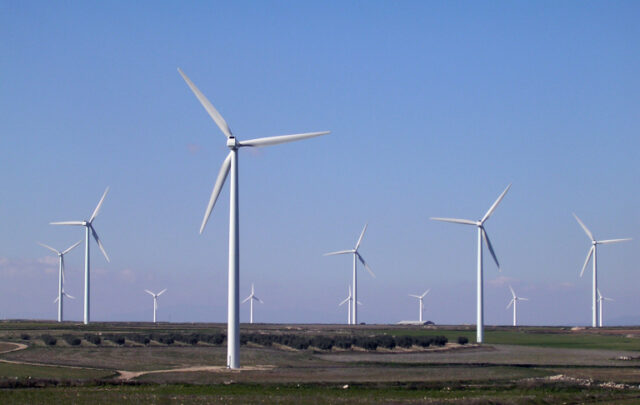Environmentalists question coal’s place in Obama policy
Renee Schoof, McClatchy
President Barack Obama, a longtime believer in “clean coal,” is launching an ambitious and expensive plan to help the energy industry lock climate-changing gases from coal-fired power plants deep underground.
“If we can develop the technology to capture the carbon pollution released by coal, it can create jobs and provide energy well into the future,” the president said in February at a meeting with Republican and Democratic governors, including those from coal-mining states.
The idea, which has been around for years, is a key part of Obama’s plan for building a diverse mix of power sources — including more nuclear energy, oil and natural gas drilling and renewable energy — while also putting the country on a path to an 80 percent reduction in emissions of heat-trapping gases by 2050.
On the face of it, making the nation’s abundant supply of coal less polluting is alluring. Keeping coal in the energy equation preserves jobs, and a way of life.
…Revis James directed a study for the institute on how to reduce greenhouse gas emissions at the lowest cost. James, who has a nuclear engineering and power plant background, said the study concluded that a mix of energy that included carbon capture and storage and new nuclear energy would be cheaper than doing without either and increasing natural gas use instead.
The study assumed that carbon capture and storage would be widely available and added to 20 percent of existing coal plants and all new ones. Plants without it eventually would have to be shut. The study also estimated that 6.5 percent of emissions reductions would come from gains in energy efficiency.
Other analysts see a larger role for efficiency and renewable energy that would lead to a phaseout of coal.
Higher costs for coal in the future also could change the cost calculations for carbon capture and storage, said Richard Heinberg, a senior fellow at the Post Carbon Institute, a group that advocates the end of fossil fuel use. High-quality and cheap coal in the U.S. is being used up, and so coal prices will be two to five times higher in 20 years, he said.
The Department of Energy so far has committed $4 billion for carbon capture and storage, and expects industry to spend $7 billion more. The federal share includes $1 billion for FutureGen, a planned coal gasification plant that would store carbon dioxide emissions. An industry alliance plans to spend $400 million to $600 million, but is looking for more partners to raise funds.
(26 February 2010)
The Dirty Truth Behind Clean Coal
Joshua Frank, truthout
If you’ve tuned in to the Winter Olympics this past week, you likely sat through repeated showings of a multimillion-dollar public relations campaign paid for by Big Coal regarding the potential laurels of “clean-coal” technology. The premise of the 30-second spot is simple: Coal can be clean and America needs to wean itself off of foreign crude and create jobs back home by tapping our nation’s vast coal reserves.
Indeed, the effort to paint coal as environmentally friendly is not an easy endeavor, especially when the climate movement has picked up speed and lambasted the industry for contributing more than its fair share to the global warming dilemma.
Activists around the world have targeted coal for a number of reasons. First, coal is still plentiful (compared to gas and oil) so stopping its use will largely curtail carbon output down the road. Second, it is the dirtiest of all fossil fuels. Lastly, in the US the fleet of coal-fired power plants is almost old enough to file for Medicare, so these aging plants are sitting ducks for closure efforts.
“NASA climate scientist James Hansen … has demonstrated two things in recent papers,” writes environmental author and activist Bill McKibben about the need to axe coal. “One, that any concentration of carbon dioxide greater than 350 parts per million in the atmosphere is not compatible with the ‘planet on which civilization developed and to which life on earth is adapted.’ And two, that the world as a whole must stop burning coal by 2030 – and the developed world well before that – if we are to have any hope of ever getting the planet back down below that 350 number.”…
(27 February 2010)
Parsing fact from fiction with the Bloom Energy box
Martin LaMonica, cnet news
Boy, did I pick a lousy week to leave the country for a family vacation.
What did I miss? Well, a company seems to have come out of nowhere, raised loads of money, has retired Gen. Colin Powell on its board, and made some audacious claims about reinventing the energy business. As I dug through last week’s news, I asked myself: Is Bloom Energy’s public relations blitz to be believed?
The short answer, it appears, is “yes.” But don’t expect miracles.
For people in the green-tech industry, digging up information on Bloom Energy has been like the fruitless quest for El Dorado. Finally, last week, Bloom Energy orchestrated a grand introduction to the world, revealing its fuel cell technology and naming a number of companies already using the Bloom Energy Server.
Fuel cell apps in action. Fuel cell technology was most recently on the tech media’s radar last year when the Department of Energy proposed cutting research for fuel-cell vehicles, which have been touted for many years as the ultimate green car solution. Mobile fuel cells have formidable technical challenges, notably storing enough hydrogen for a long driving range, and the lack of a hydrogen distribution infrastructure. Bloom Energy CEO KR Sridar told reporters at least twice during last week’s press conference that the technology was not developed for cars, an indication of how much people associate fuel cells with vehicles.
Bloom Energy is using fuel cells for stationary power, which is arguably a better application for the technology. For starters, stationary fuel cells can use the natural gas lines already in place for fuel. The Bloom Energy Server can run on different fuel sources, including biogas, a gas made from organic materials. And they can be strung together, much the way servers are clustered to boost processing muscle. An initial customer, eBay, for example, is using a five 100 kilowatt boxes–each about the size of a parking space, to power 15 percent of its headquarters in San Jose, California.
Many viewers of the 60 Minutes segement may have simply been surprised that Silicon Valley’s movers and shakers are working so seriously on clean energy. Even for those in the know, though, Bloom Energy’s technology is intriguing and brings fuel cells, which many people have dismissed as technically challenged, back into the discussion over the future of energy.
So how do their claims stack up? Based on company-provided materials, they look pretty good. But keep in mind, solid oxide fuel cells are a well known technology with understood benefits and limitations.
…Where Bloom Energy stands out is the design and materials it’s using in its fuel cells, which offers the potential to lower costs with higher manufacturing volume. The core of Bloom Energy’s technology is a solid oxide fuel cell, which takes fuels and oxygen from the air to make an electrical current.
One technical challenge with this type of fuel cell is that they operate at very high temperatures. That allows for greater efficiency in energy conversion but also requires engineers to deal with high heat. Bloom has designed the system to recycle the heat generated from the energy conversion in the process of mixing incoming natural gas with steam, which is needed with this type of fuel cell. So instead of using the heat to make hot water, for example, the heat is fed back into make electricity, according to the company.
…Given that these fuel cell boxes require a hefty upfront cost, the most obvious customers for these mini-power stations are businesses and utilities, not consumers. Companies can afford to make relatively long-term energy purchasing decisions, particularly if there are economic incentives to buy cleaner sources of energy. Unless a company fixes into a long-term contract for gas, the cost of power from a Bloom Energy Server will vary with the cost of natural gas, which has been volatile in recent years, so fuel cells don’t have the same predictability that a solar array would have. On the other hand, on-site solar panels cannot deliver electricity at all times of the day as a fuel cell can.
(1 March 2010)





